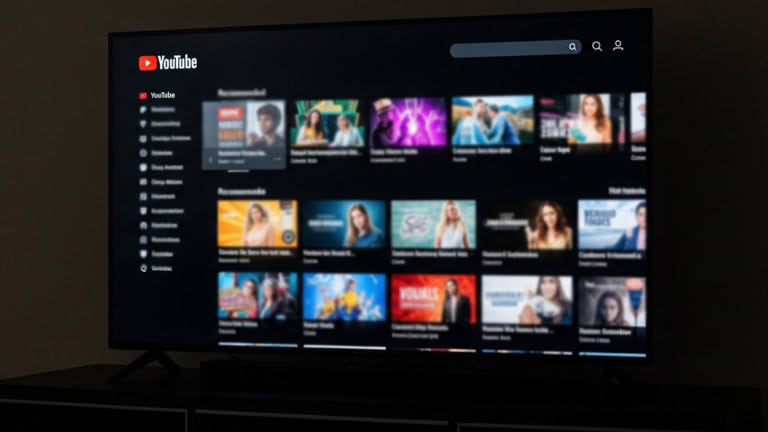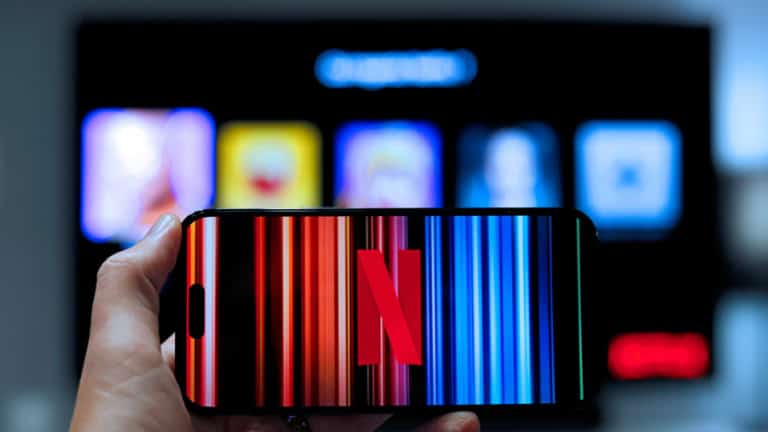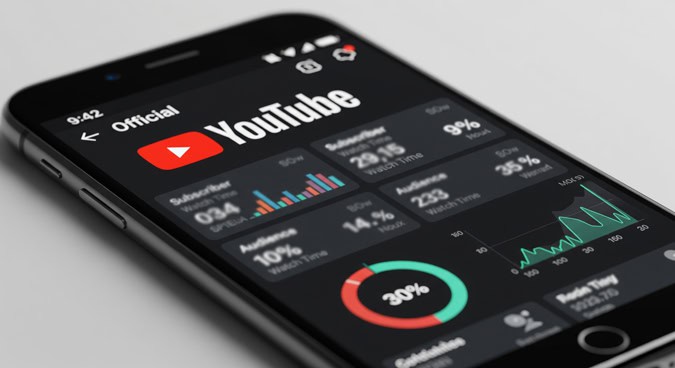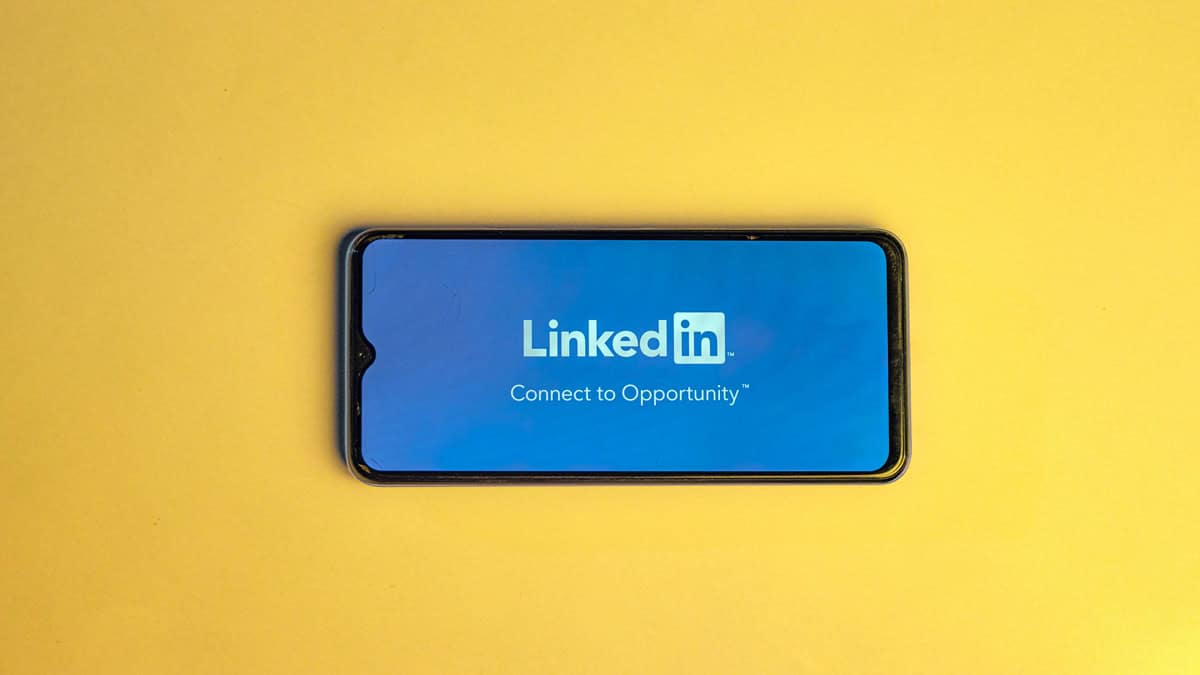
Here’s a guide to maximizing LinkedIn ad performance for B2B tech companies who want to generate leads.
Begin By Providing Value
LinkedIn is a “give-value-to-get-value” platform, meaning your content must meet a high standard to capture the attention of decision-makers, and especially to get their contact information.
The cardinal rule: Do not ask your target audience for their contact information before you provide value.
How do you help your target audience? Consider their perspective. They’re likely ambitious, curious, risk-averse, and concerned about job security. Do not underestimate the last part. Thus, your ad content should:
- Help them do their job better
- Help them avoid failing at their job
- Help them keep pace with (or surpass) their competitors
Key Considerations For LinkedIn Ad Angles
Here are some questions to help you find a topic for your ads that will get your target buyer’s attention:
- What new innovation or technology poses an existential threat to their industry?
- What common problem do they face that could threaten their job?
- How do they earn money and what information can you provide to make them more?
- What information can you share to address their blind spots?
- What are people in their industry thinking but not saying?
- What non-consensus viewpoints do you have about their industry that could challenge conventional wisdom?
Common LinkedIn Ad Strategy Mistakes
The biggest mistakes we see companies make in their LinkedIn ad strategy are:
- Self-serving content: They talk too much about themselves (e.g. we are the best at XYZ).
- Grandiose claims: They make big claims before they’ve built any credibility with buyers.
- No urgency: They share information on topics that are not timely, so it’s not relevant.
- Too transactional: Their content feels too desperate, so the message seems insincere.
- Convoluted messaging: It’s unclear what message they’re sharing or what value they offer.
- Lack of niche: Their content is too broad to resonate with their target buyer.
- No new insights: The content does not reveal any new information or data, so it’s not helpful or memorable.
A great topic could be artificial intelligence (AI). It’s a disruptive new technology that’s accelerating rapidly and impacts nearly every industry. Nobody is quite sure yet how to leverage AI to get the most value out of it. People are worried that AI will displace jobs. And people have a paranoia that competitors will outsmart them with AI.
Combine Upper Funnel and Direct Response
Use upper-funnel campaigns to provide value by framing and contextualizing a problem, and then use direct response campaigns to show how your product solves that problem.
By combining these messages, you can drive more leads at a lower cost. For a software client, we reduced their cost per lead on LinkedIn by 11% by running lead generation, video views, and thought leadership campaigns simultaneously, compared to running only lead generation campaigns.
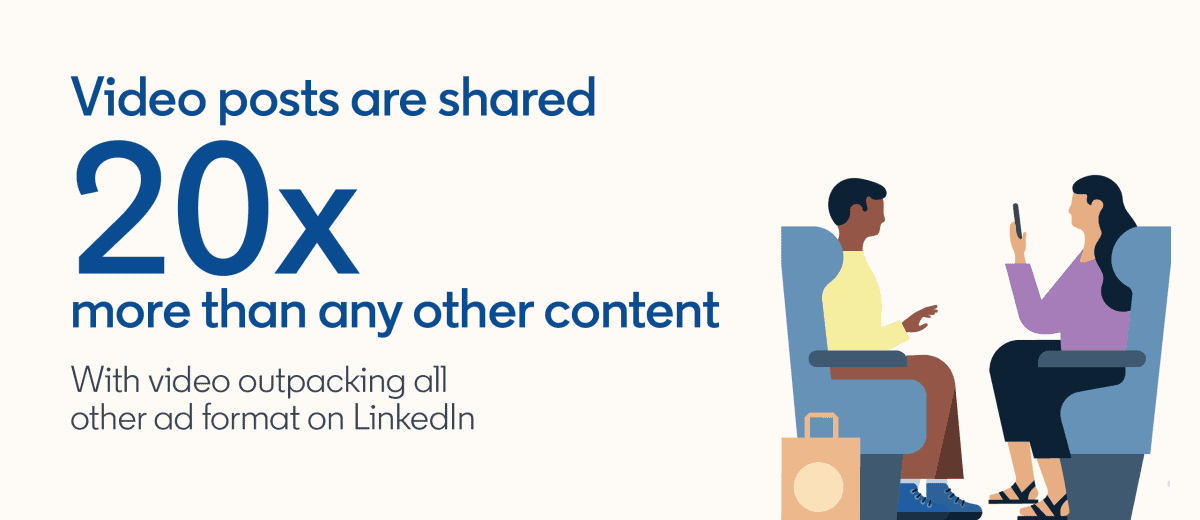
LinkedIn Creative Best Practices
Once you choose a topic for the upper-funnel campaign, consider the format of your LinkedIn ad content. Here’s what we see working:
- Video content: LinkedIn wants users to stay on their platform longer, and video has high engagement. So we often see videos get more reach than other content types. Video posts are also share 20x more than any other content, per LinkedIn.
- Listicles: Breaking down a topic into bite-sized recommendations or concrete steps makes the content more digestible and leads to higher click-through rates.
- Document ads: These ads allow you to gate slide decks to drive leads after you’ve piqued your audience’s interest. Also, the “Unlock Full Document” CTA has the highest avg. conversion rate (20.5%) among CTAs for lead generation ads.
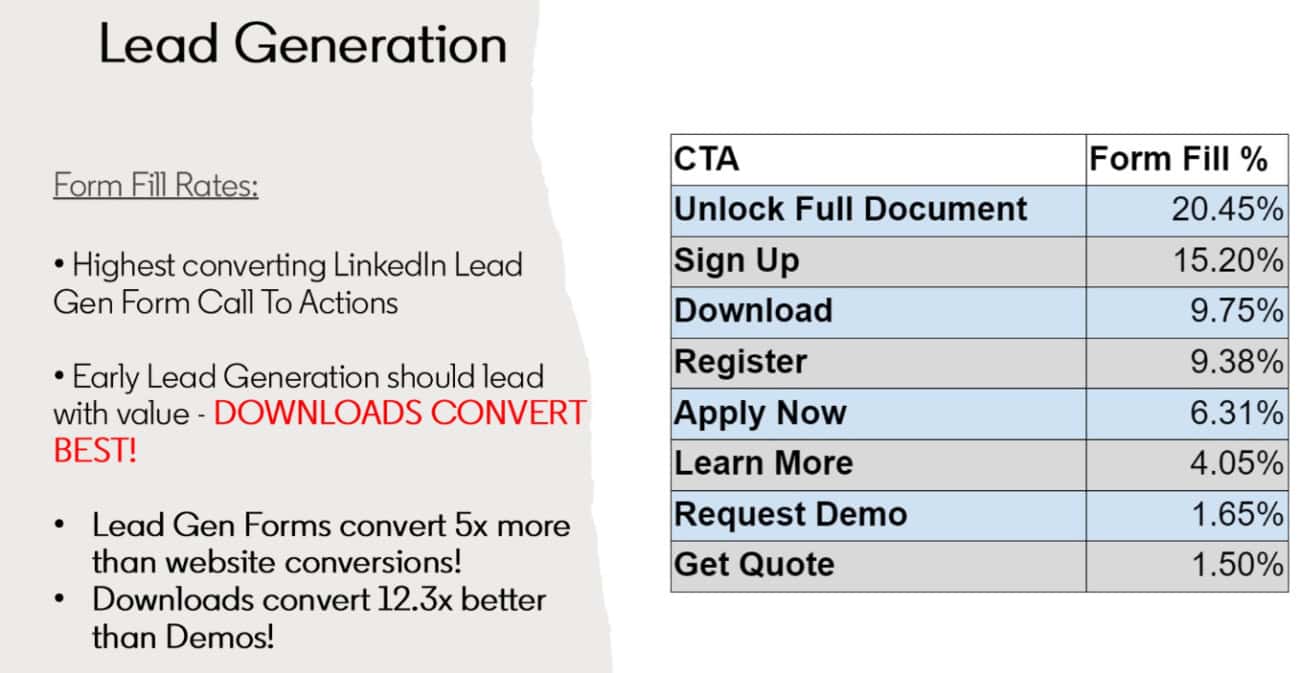
Other LinkedIn Ad Tips
Below is an assortment of other lessons we’ve learned from managing LinkedIn ad campaigns for B2B tech companies.
- Manual bidding: Always use manual bidding on LinkedIn ads. Don’t rely on LinkedIn’s suggested bid ranges; start low and adjust upwards for more delivery. Manual bidding helps maximize your “shots on goal.”
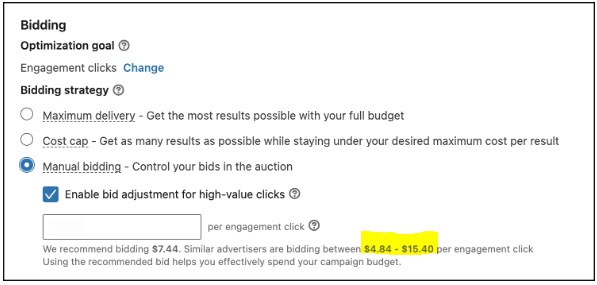
- Aspect ratio: 1×1 ads generally outperform other aspect ratios for both static ads and videos on LinkedIn.
- LinkedIn audience network: Opt out of this placement as it typically does not drive quality leads.
- Audience targeting: Understand the tradeoffs between audience size, intent, and CPM. If you target a smaller audience, CPMs will rise. This is OK if the intent of the audience also rises, such as with a remarketing audience. But keep this in mind.
- Audience exclusions: Exclude your existing employees from seeing ads to avoid wasted ad impressions, especially for larger companies.
- On-platform leads: Reduce friction by capturing leads directly on LinkedIn instead of your website. These leads can then be added to email nurture campaigns if you want to share more information that they may miss by not visiting your website.
- Remarketing options: Engaging content on LinkedIn opens up remarketing opportunities. You can remarket to users who open lead generation forms, visit your company page, or view videos on LinkedIn.
Need help with your next LinkedIn campaign? Reach out to us at [email protected] for a free consultation.

